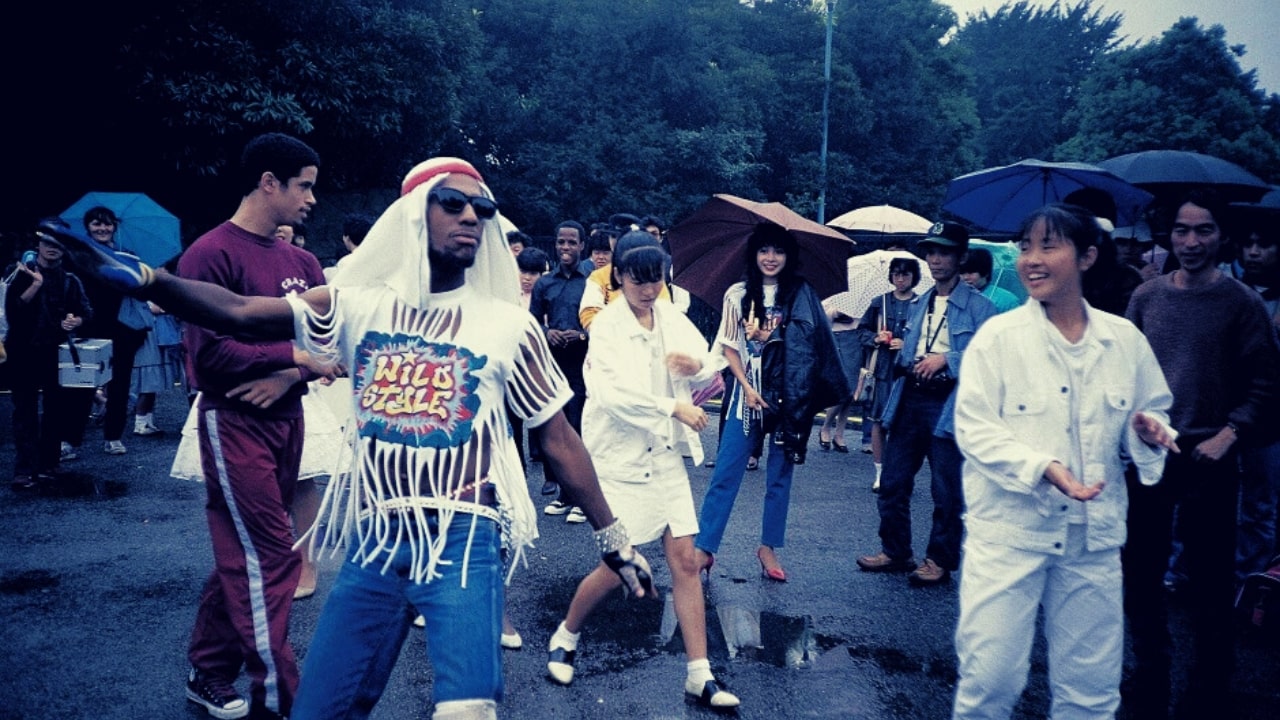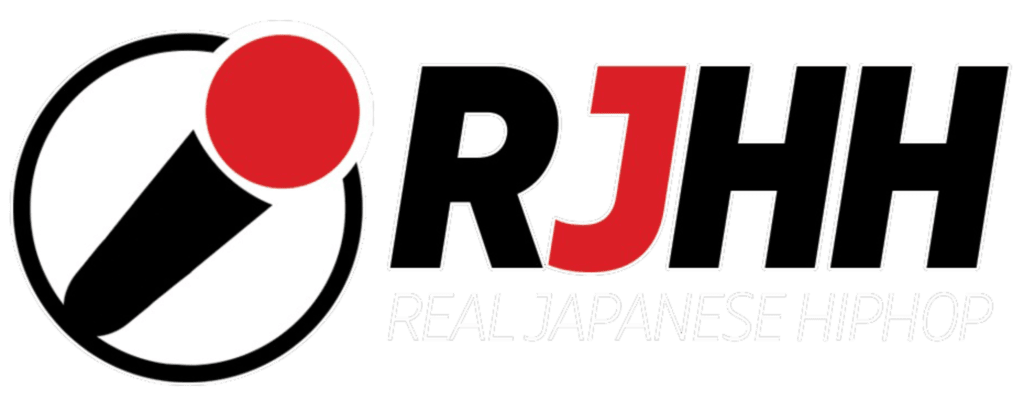June 8, 2023 | Paris, France | by Attango
In the early 1980s, Japan was unaware of the nascent hip-hop culture in the United States. Most artists in major Japanese cities played pop-rock, du disco, and other traditional Japanese music. However, several events during the 1980s led to the birth of Japanese Hip-Hop culture, to the discovery of this culture by a minority of Japanese youth and by influential artists who helped adapt the Japanese language to rap.
Hiroshi Fujiwara, Toshio Nakanishi and DJ Yutaka

Hiroshi Fujiwara
Before the developing hip-hop culture in the United States reached Japan, Hiroshi Fujiwara (藤原 浩) and Toshio Nakanishi (中西俊夫) were in New York in 1982 for different reasons. A few years later, they would become significant players in introducing hip-hop to Japan. Toshio Nakanishi was the first to experience hip-hop when he attended an Afrika Bambaataa concert in May 1982 to record an album with producer Moichi Kuwahara. Shortly after, he featured the Rock Steady Crew in a video shot in the Bronx for his group called Melon.
In the same year, Hiroshi Fujiwara was also in New York with his friend Malcolm McLaren, an English businessman, music producer, and artist agent he had met in London a few months earlier. It was during this trip that young Fujiwara discovered hip-hop. A local friend took him to the Roxy Theatre in New York, where he found the genre’s pioneers. Captivated by this new musical discovery, Hiroshi Fujiwara made several trips between Tokyo and New York that would change his life. During these travels, he brought back several American hip-hop vinyl records (Run-D.M.C, Beastie Boys, LL Cool J, Grandmaster Flash…) and started performing as a DJ in several nightclubs in Tokyo.
Hiroshi Fujiwara thus became a vital link between American hip-hop and the emerging Tokyo scene. He was one of the first DJs to introduce hip-hop to several Japanese clubs and familiarize the Japanese music scene with scratching and mixing. At the same time, the young artist began thinking about his future fashion creations, seeking a way to combine his hip-hop music tastes with a youth-oriented lifestyle. Hiroshi Fujiwara played a significant role in Japanese hip-hop culture through his involvement in other groundbreaking creations.

DJ Yutaka
DJ Yutaka is considered today a living legend of the rise of hip-hop culture in Japan. He began his DJ activities with the disco music scene in 1978 and quickly gained fame in Shinjuku, where he performed his first sets. In 1982, DJ Yutaka had the opportunity to attend Sound Systems events in New York, which was a defining experience for his career. During this stay, he met Afrika Bambaataa, one of the iconic figures of the hip-hop movement. He became the only Japanese person to join the ZULU NATION, an international organization for hip-hop founded in 1973 in New York. This affiliation strengthened his legitimacy and influence in the Japanese hip-hop community.
In 1983, DJ Yutaka hosted the entire WILD STYLE film crew during their tour in Japan, solidifying his status as an essential actor in the hip-hop scene. Furthermore, together with his long-time friend, Crazy-A, he created the annual B-BOY PARK festival in 1997, a major event in the Japanese hip-hop agenda. DJ Yutaka made numerous trips between Japan and the United States throughout his career while producing solo works.
In 2000, he released the UNITED NATIONS project, which left a lasting impression and strengthened the ties between Japanese and American hip-hop. UNITED NATIONS is also the Japanese branch of the ZULU NATION. Thanks to his hard work and dedication to hip-hop culture, he became one of the main catalysts for importing the movement to Japan. Beyond his achievements as a DJ, he has also been a pioneer of the Japanese hip-hop scene as a producer and promoter. He supported many emerging artists and helped popularize hip-hop in the country by organizing events and shows.
Wild Style Tour Japan

The film “Wild Style“, an American fiction about the hip-hop culture born in the United States, was first screened in Shinjuku in an almost empty theater, where 21-year-old Hideaki Ishi, aka DJ Krush, discovered it. The same year, Charlie Ahearn brought the Wild Style Tour to Japan (Tokyo), with around thirty cast members and the film crew, including Rock Steady Crew, Cold Crush Brothers, Grandmaster Flash, and Fantastic Freaks. These artists performed on several stages in Tokyo, on Japanese television, and Yoyogi Park.
The meeting between young Japanese people, participants from the film “Wild Style”, DJs, and dancers from the Bronx in Tokyo’s Yoyogi Park was the first significant encounter for some young Japanese people with hip-hop culture. The 1983 Wild Style Tour was one of the early moments of global cultural crossover. Just a few weeks later, three first breakdance groups, B-5 Crew, Mystic Movers, and Tokyo B-Boys, appeared in the streets of Harajuku.

Wild Style Tour Japan 1983
run D.M.C au NHK City Hall
Three years after the promotion of the movie Wild Style, Run D.M.C.‘s concert at NHK City Hall in Tokyo in 1986 was another significant event that helped stimulate the burgeoning Japanese rap scene. Comprised of Joseph “Run” Simmons, Darryl “D.M.C.” McDaniels, and Jason “Jam Master Jay” Mizell, Run D.M.C. was already considered an iconic rap group, with their popularity transcending American borders to reach Japan. The success of this concert also paved the way for other Japanese rap artists, contributing to the dissemination and popularization of the genre in the country.
Ito Seiko’s influence
Ito Seiki (いとうせいこう) is considered Japan’s first rapper. He revolutionized rap dialectics in Japanese, moving away from the American imprint. In the early 1980s, most record labels paid no attention to this new genre of music imported from the United States. Some producers and artists have attempted to experiment with Japanese rap but without much success. However, all of that was about to change with the release of the album “Sangyokun Monogatari” (業界くん物語) in 1985, a project that would have a considerable influence on the new generation of Japanese rappers in the late 1980s, such as You The Rock, Scha Dara Parr, Kohei Japan, and Utamaru.
Ito Seiko, whose real name is Seiko Ito, was born in Tokyo, Japan on March 19, 1961. From a young age, he was passionate about music and interested in the emerging hip-hop movement in the United States. He was fascinated by the catchy rhythms and artistic expression of rap. Determined to bring this innovative art form to Japan, he became an MC after completing his university studies.

Ito Seiko, Sangyokun monogatari
However, the path to recognition and success was difficult for Ito Seiko. At the time, other musical genres primarily dominated the Japanese music scene. Rap music was seen as foreign and incompatible with the country’s music culture. Despite this, Ito Seiko persisted in his vision and worked on his unique Japanese rap style. In 1985, Ito Seiko released his first solo album. His techniques gained more attention and inspired other artists. “Sangyokun Monogatari” (業界くん物語) helped develop an unknown genre in Japan, influencing rappers. They incorporated elements of American hip-hop while remaining true to their Japanese culture and identity.
MAJOR FORCE

Major Force label
In 1988, the MAJOR FORCE label was the first label to produce Japanese rap songs. Before that, some producers had made a few attempts at Japanese rap but were unsuccessful. Most other music labels were not interested in rap. Furthermore, rappers had to understand hip-hop breakbeats better and blend them with Japanese lyrics while improving their skills. In 1986, progress began to be noticed with songs like “Mass Communication Break Down“, “Nasty Beats“, and “I Luv Got The Groove” by artist Haruo Chikida, who became a rapper under the name President BPM. Chikida Haruo is as important a rapper as Ito Seiko, because he too has improved Japanese rap techniques. Two years later, after a crucial meeting between Chikida Haruo (President BPM), Kan Takagi, Toshio Nakanishi, Kudo Masayuki, Gota Yashiki, and Hiroshi Fujiwara, the MAJOR FORCE label was officially created under Sony’s auspices.

MAJOR FORCE LABEL: Tiny Panx, The Orchids, SDP, DJ MIX HIROSHI
Shortly after the label’s creation, several tracks were released, including those by the founders of the newly formed entity: “Last Orgy” by Tiny Panx (formerly known as Tiny Punx), “Life Is a Science,” and “Yes, We Can” by the female group The Orchids, and “Copy ’88” and “Love & Peace” by Tycoon To$h with Terminator Troops. MAJOR FORCE also led to the diversification of styles and new rap groups. During a talent contest organized at that time, “DJ UNDERGROUND CONTEXT No. 1“, won by the group Krush Posse (DJ Krush, Muro, DJ Go), it was the group Scha Dara Parr (スチャダラパー) that stood out. The trio of artists Ani, Bose, and Shinco represented the generation that followed Seiko Ito, Tiny Panx, and President BPM, paving the way for Japanese rappers of the 1990s. Scha Dara Parr (SDP) attracted attention with their original lyrics and the quality of their produced sounds.
The 1980s was a critical period for the emergence of Japanese Hip-Hop culture. It began to shape and develop thanks to iconic figures like Ito Seiko, Hiroshi Fujiwara, Toshio Nakanishi, Dj Yutaka, and the Wild Style Tour. The MAJOR FORCE label marked a turning point in the production of Japanese rap songs and paved the way for many talented artists and groups. Today, Japanese Hip Hop is a thriving and diverse scene, reflecting the influence and creativity of this global culture.

DMC40 in Tokyo: How Japan Is Becoming the Global Heart of DJing








